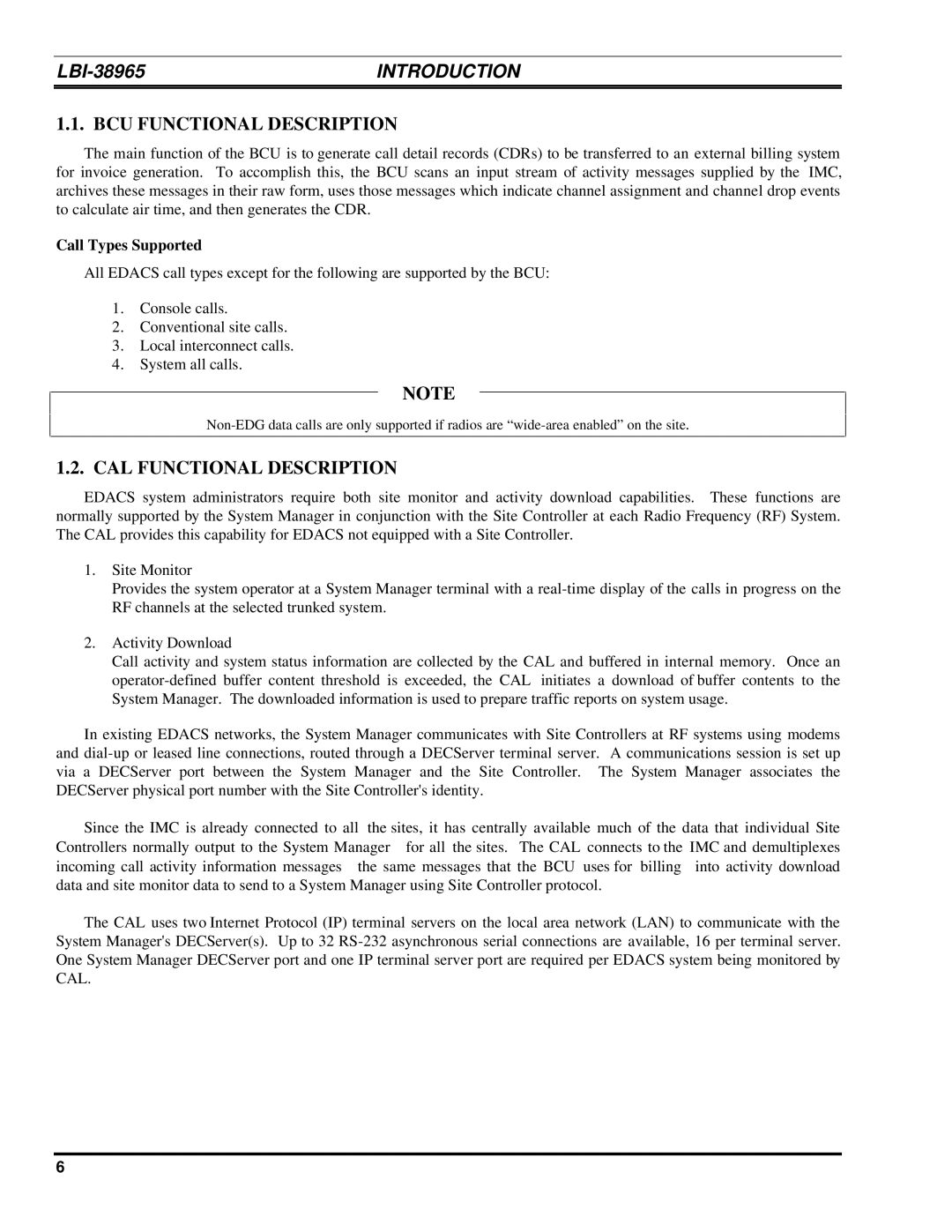
| INTRODUCTION |
1.1. BCU FUNCTIONAL DESCRIPTION
The main function of the BCU is to generate call detail records (CDRs) to be transferred to an external billing system for invoice generation. To accomplish this, the BCU scans an input stream of activity messages supplied by the IMC, archives these messages in their raw form, uses those messages which indicate channel assignment and channel drop events to calculate air time, and then generates the CDR.
Call Types Supported
All EDACS call types except for the following are supported by the BCU:
1.Console calls.
2.Conventional site calls.
3.Local interconnect calls.
4.System all calls.
NOTE
1.2. CAL FUNCTIONAL DESCRIPTION
EDACS system administrators require both site monitor and activity download capabilities. These functions are normally supported by the System Manager in conjunction with the Site Controller at each Radio Frequency (RF) System. The CAL provides this capability for EDACS not equipped with a Site Controller.
1.Site Monitor
Provides the system operator at a System Manager terminal with a
2.Activity Download
Call activity and system status information are collected by the CAL and buffered in internal memory. Once an
In existing EDACS networks, the System Manager communicates with Site Controllers at RF systems using modems and
Since the IMC is already connected to all the sites, it has centrally available much of the data that individual Site Controllers normally output to the System Manager⎯for all the sites. The CAL connects to the IMC and demultiplexes incoming call activity information messages⎯the same messages that the BCU uses for billing⎯into activity download data and site monitor data to send to a System Manager using Site Controller protocol.
The CAL uses two Internet Protocol (IP) terminal servers on the local area network (LAN) to communicate with the System Manager's DECServer(s). Up to 32
6
